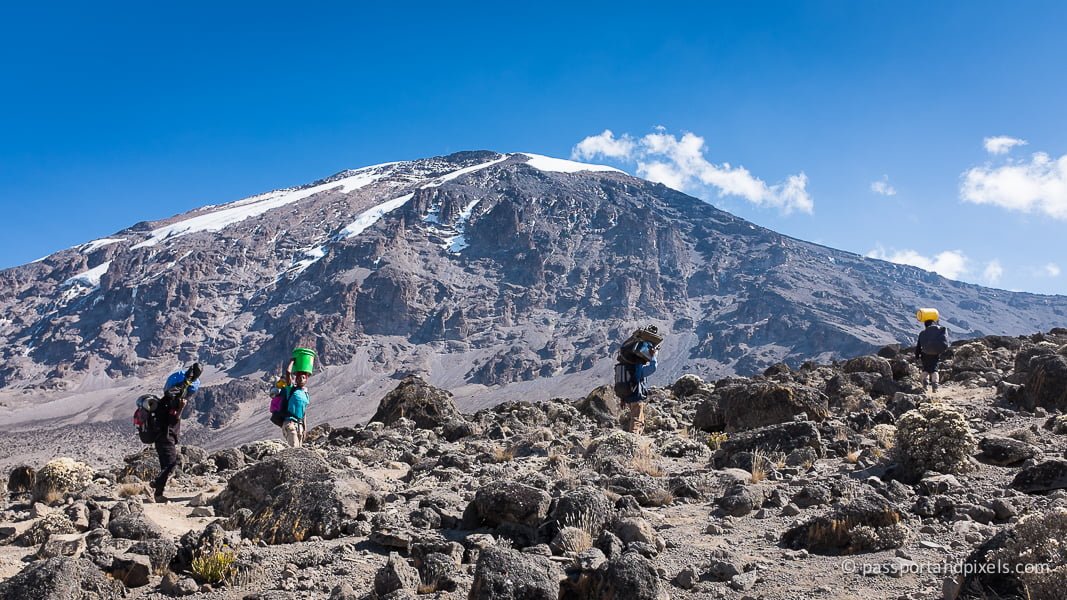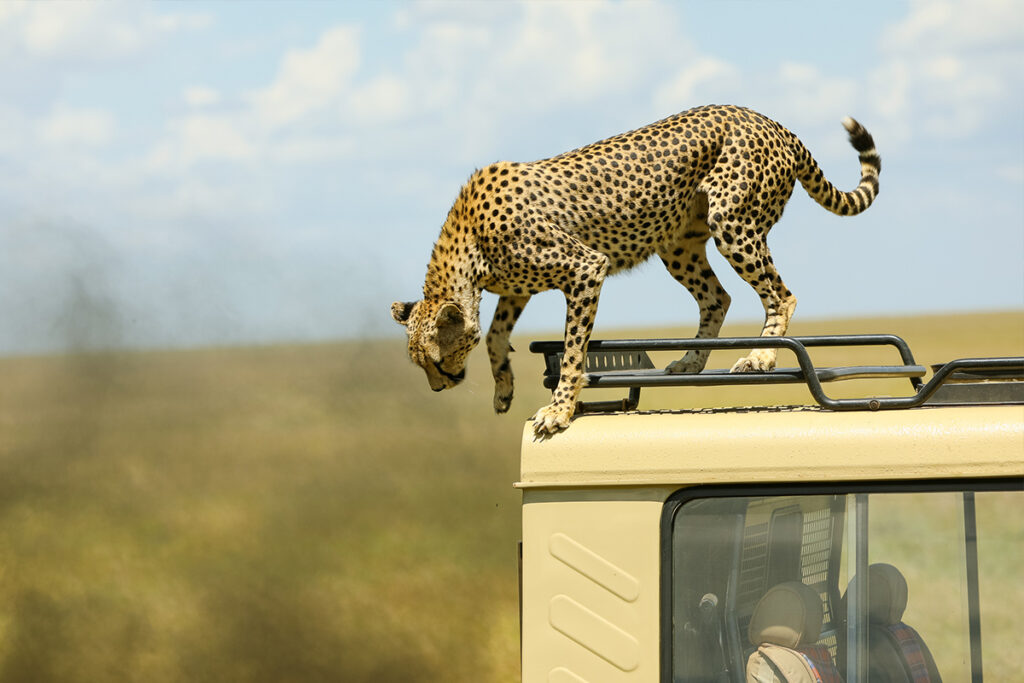Scaling Mount Kilimanjaro is an adventure that tempts many with its towering height and stunning vistas. However, the allure of hiking this iconic peak alone is like balancing on a tightrope. The solitude may offer an unparalleled sense of achievement, but the risks involved cannot be ignored.
Historically, climbers have experienced various challenges, from sudden weather shifts to altitude sickness. Statistics show that over 50% of climbers experience altitude-related issues. Thus, seasoned guides and porters play a critical role in ensuring safety and success on this journey, providing not just company but also essential expertise.

Risks of Hiking Mount Kilimanjaro Alone
Hiking Mount Kilimanjaro alone presents several risks that can jeopardize one’s safety. The weather is unpredictable and can change quickly, from sunny to stormy in a matter of hours. Temperature drops drastically as you ascend, increasing the risk of hypothermia. These sudden changes in weather conditions require quick adaptation, which is challenging without a support team. Also, poor visibility during heavy fog can make trails hard to follow.
Altitude sickness is another significant risk when hiking solo. It affects many climbers, causing symptoms like headaches, dizziness, and even severe complications. Without a guide, recognizing and properly managing these symptoms can be difficult. In severe cases, altitude sickness can be life-threatening, making it crucial to have someone monitoring your health. Guides are trained to spot early signs and provide immediate assistance.
Physical demands of the hike should not be underestimated. Hiking solo means you are solely responsible for carrying your gear, which can be exhausting. You must be prepared for long, strenuous days of walking with limited rest breaks. If you become injured or exhausted, there is no one to help carry the load or provide medical aid. This isolation can slow your progress and increase vulnerability.
Finally, navigating the trails alone poses a risk, especially with the presence of wildlife. While rare, encounters with animals can be dangerous, and without a group, you may be more susceptible. Getting lost is another risk, as some paths are not well-marked. A lack of companions can make it more difficult to remain oriented. Having a guide helps mitigate these risks by providing valuable local knowledge and safety expertise.
Weather Conditions and Altitude Sickness
Mount Kilimanjaro’s weather is highly unpredictable. You might start your day in warm sunlight but face freezing winds and snow by night. This drastic temperature change can be tough on the body if you’re unprepared. Wind speeds can also reach dangerous levels, making it harder to keep your balance. Appropriate clothing and gear are essential for these conditions.
Altitude sickness is a common challenge climbers face. As you ascend, oxygen levels drop, which can cause serious health issues. Symptoms include headache, nausea, and dizziness. In severe cases, it can lead to High Altitude Cerebral Edema (HACE) or High Altitude Pulmonary Edema (HAPE). Both conditions can be fatal without prompt medical attention.
Proper acclimatization is key to avoiding altitude sickness. This means climbing slowly and taking regular breaks to let your body adjust. Guides often use the “climb high, sleep low” method, where you hike to a higher altitude during the day and descend slightly to sleep. This technique helps your body produce more red blood cells, improving oxygen transport. Hydration and good nutrition also play a crucial role in acclimatization.
Weather and altitude-related risks can be mitigated with proper preparation. Carrying a first aid kit, staying hydrated, and dressing in layers are crucial steps. It’s also advisable to know the signs of altitude sickness and how to respond. Always listen to your body and don’t push beyond your limits. Consulting experts or joining a guided hike can significantly enhance your safety.
Physical Demands and Emergency Situations
Climbing Mount Kilimanjaro requires significant physical stamina. The trek involves long hours of walking over rugged terrain. You’ll need strong legs and a fit cardiovascular system to handle the demands. Frequent breaks are crucial to prevent exhaustion. Proper training before the hike can make a big difference.
Carrying all your gear adds to the challenge. A heavy backpack can strain your muscles and joints. Pack wisely to ensure you have what you need without overloading yourself. Items like water, snacks, first aid kits, and extra clothing are essential. On the flip side, carrying too much can slow you down and increase fatigue.
Emergency situations can arise unexpectedly. Injuries like sprains, cuts, or blisters are common. More serious incidents, such as broken bones or altitude-related complications, can also occur. Knowing basic first aid and having an emergency plan is important. Always inform someone of your hiking route and expected return time.
Being prepared for emergencies is essential. Solo hikers are more vulnerable, so extra caution is needed. Carrying a satellite phone or personal locator beacon can be lifesaving. These devices allow you to call for help if you’re in trouble. In high-stress situations, staying calm and making smart decisions is key.
Navigation and Wildlife Encounters
Navigation on Mount Kilimanjaro can be tricky, especially for solo hikers. The trails can become confusing, with many paths intersecting. Maps and GPS devices help, but it’s easy to make a wrong turn. In low visibility conditions, this risk increases. Being familiar with the trail and having navigational skills are crucial.
While hiking, encountering wildlife is a possibility. Animals such as buffaloes, elephants, and various small mammals call Kilimanjaro home. Most are harmless if left alone, but unexpected encounters can occur. Knowing how to react to wildlife is essential to avoid danger. For example, never approach or feed wild animals.
It’s important to stay on marked trails to minimize risks. Straying off-path can lead to getting lost or damaging delicate ecosystems. Following the signs and markers can keep you on the right track. It’s also helpful to have a compass and know how to use it. These tools aid in maintaining the correct path.
Wildlife encounters can be exciting but also pose a risk if you’re alone. Large animals can behave unpredictably, especially if startled. Keeping a safe distance is the best practice. Using binoculars can help you observe wildlife without getting too close. This way, you respect their space while ensuring your safety.
Being prepared for navigation challenges helps in making a successful hike. Study the trail map before starting your journey. Note key landmarks and rest points. Having a detailed plan can prevent disorientation. Always be alert and aware of your surroundings.
Encountering wildlife can be one of the most memorable parts of the hike. However, always follow safety guidelines. Encountering animals in their natural habitat is a privilege. Respecting their space ensures a harmonious experience. Your safety and the well-being of the animals go hand in hand.
Planning for a Safe Climb
Proper planning is essential for a safe climb on Mount Kilimanjaro. Start by researching the best time of year to hike, as weather conditions vary. The dry seasons, from January to mid-March and June to October, are generally safer. These times have less rain and better visibility. Knowing when to go can help you avoid dangerous weather.
Choosing the right gear is critical for a successful climb. You’ll need sturdy boots, warm clothing, and a reliable backpack. Make sure your gear is well-fitted and tested before the trip. It’s important to pack light but include all essentials. A packing checklist can help you stay organized.
Physical fitness plays a huge role in your ability to tackle the mountain. Begin a training regimen several months before your climb. Focus on cardio, strength, and stamina. Hiking local trails with a weighted backpack can simulate conditions. The better shape you’re in, the more enjoyable the climb.
Acclimatization is crucial for dealing with high altitudes. Plan a slower ascent to give your body time to adjust. Some routes offer better acclimatization opportunities. Discuss these options with your guide. Taking it slow reduces the risk of altitude sickness.
A solid meal plan should also be part of your preparation. Consuming balanced meals with carbs, protein, and fats can keep your energy levels up. Staying hydrated is equally important. Bring high-energy snacks like nuts and energy bars for quick boosts. Good nutrition supports your overall health during the climb.
Informing others about your climb plans adds an extra layer of safety. Share your itinerary with family or friends. This way, someone knows your schedule in case of an emergency. Always have a reliable communication method on hand. Staying connected ensures you can get help if needed.
The Role of Guides and Group Dynamics
Guides play a critical role in the safety and success of climbing Mount Kilimanjaro. They bring invaluable experience and knowledge about the mountain. Their familiarity with the terrain helps in navigating challenging sections. Additionally, guides can manage any emergencies that arise. Having a guide can significantly reduce risks associated with the climb.
Group dynamics also contribute to a safer and more enjoyable experience. Climbing with a group offers support and encouragement. When you’re feeling tired or unsure, teammates can boost your morale. It also distributes physical responsibilities, such as carrying shared gear. This camaraderie makes the climb less daunting.
Guides are well-equipped to handle altitude-related issues. They monitor climbers for signs of altitude sickness, ensuring quick response if needed. Moreover, they offer strategies for acclimatization. This oversight can make a huge difference in your health and well-being. Guides can set a pace that matches your group’s ability, promoting safety.
Another advantage of group dynamics is shared resources. From food to first aid supplies, sharing helps lighten individual loads. Coordination in a group means better meal planning and preparation. You also benefit from diverse skills within the group. Someone might excel in first aid, while another navigates well.
Climbing in a group fosters a sense of community. You will likely build lasting friendships through this shared adventure. The collective experience can be more memorable and rewarding. When challenges arise, facing them together builds strong bonds. This fellowship contributes to a positive overall experience.
Ultimately, the role of guides and the strength of group dynamics can’t be overstated. They enhance safety, provide support, and enrich the climbing experience. With the right team and knowledgeable guides, the journey up Mount Kilimanjaro becomes more achievable. For those seeking a secure and fulfilling trek, guided group climbs offer the best path to success.
Alternative Safe Hiking Practices on Kilimanjaro
Exploring alternative safe hiking practices can enhance your Kilimanjaro experience. One key practice is to choose less crowded routes. The Lemosho and Rongai routes, for instance, are less popular but equally breathtaking. They offer opportunities for solitude without increased risk. Fewer hikers mean a more serene journey while maintaining safety.
Consider hiking during off-peak seasons for a quieter experience. These times are less crowded, allowing you to fully embrace the mountain’s beauty. While trekking during these periods, weather and trail conditions may vary slightly. However, with proper preparation, the hike remains enjoyable and safe. Always consult local guides to understand seasonal changes.
Join smaller guided groups if you prefer a more intimate setting. Smaller groups allow for personalized attention from guides and better camaraderie among members. Coordination becomes easier with fewer people, enhancing overall safety. It also allows faster adaptation if any issues arise during the climb. Personalized experiences can be more rewarding.
- Acclimatize in stages: Divide the climb into manageable segments.
- Stay hydrated: Drink plenty of water throughout the climb.
- Pace yourself: Maintain a steady, comfortable speed.
- Monitor health: Pay close attention to your body’s signals.
Avoid night hikes unless absolutely necessary due to increased risks of confusion and accidents in the dark. Daylight provides better visibility and safer navigation of trails. If an early start is essential to meet daylight goals, ensure all participants are equipped with headlamps just in case.
Planning shorter day-hikes around the base camps before attempting summit day enables careful monitoring of how each group member acclimates to rising altitudes
Taking rest days enhances strength recovery
Essential communications equipment should always include a satellite phone or tracking device regardless of group size
Several strategic practices make conquering Africa’s roof achievable



